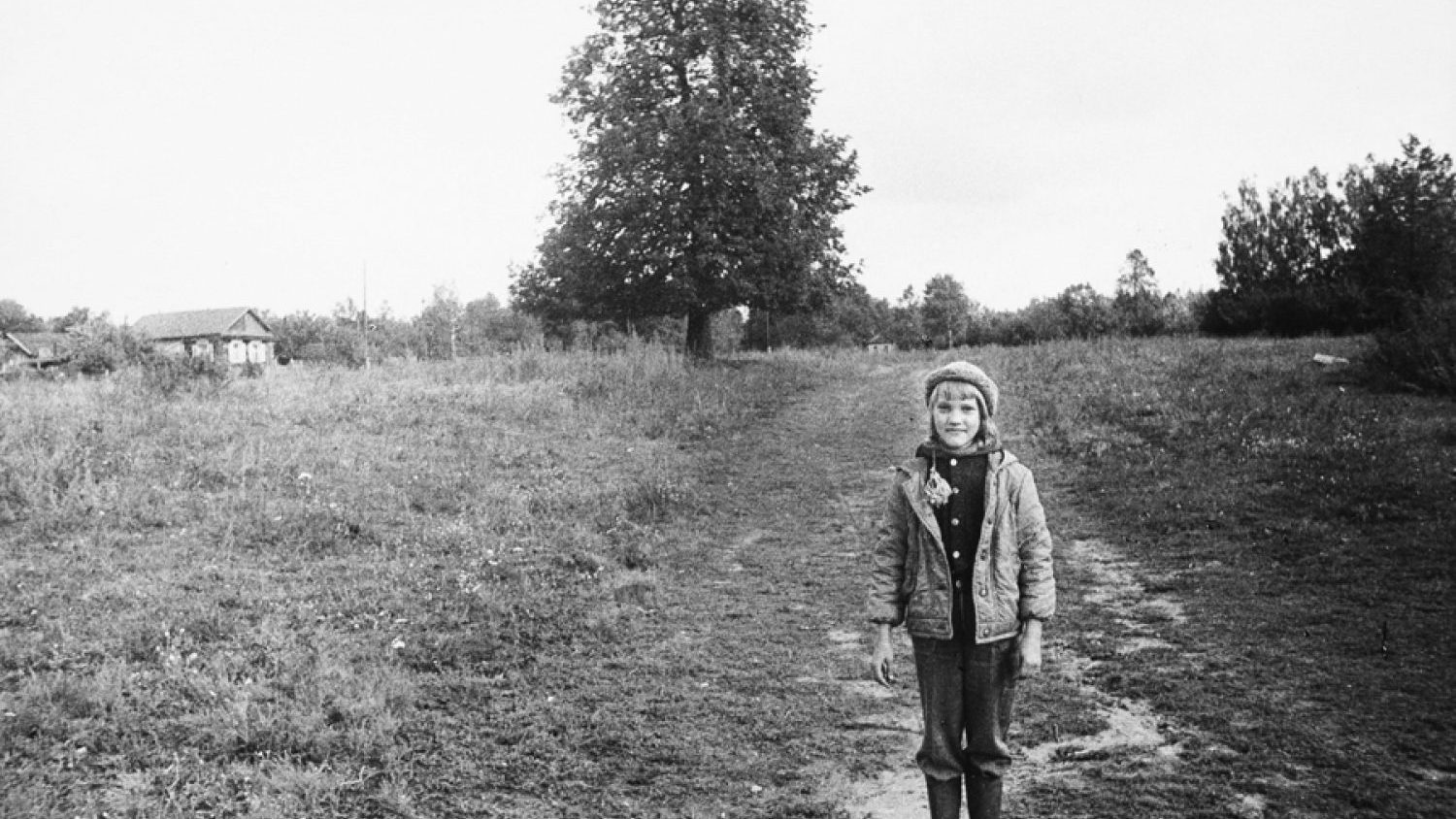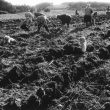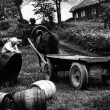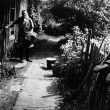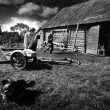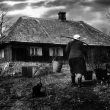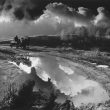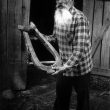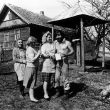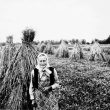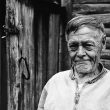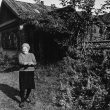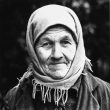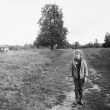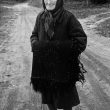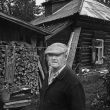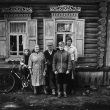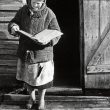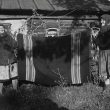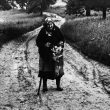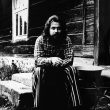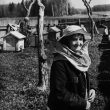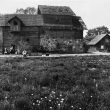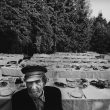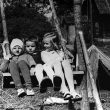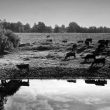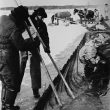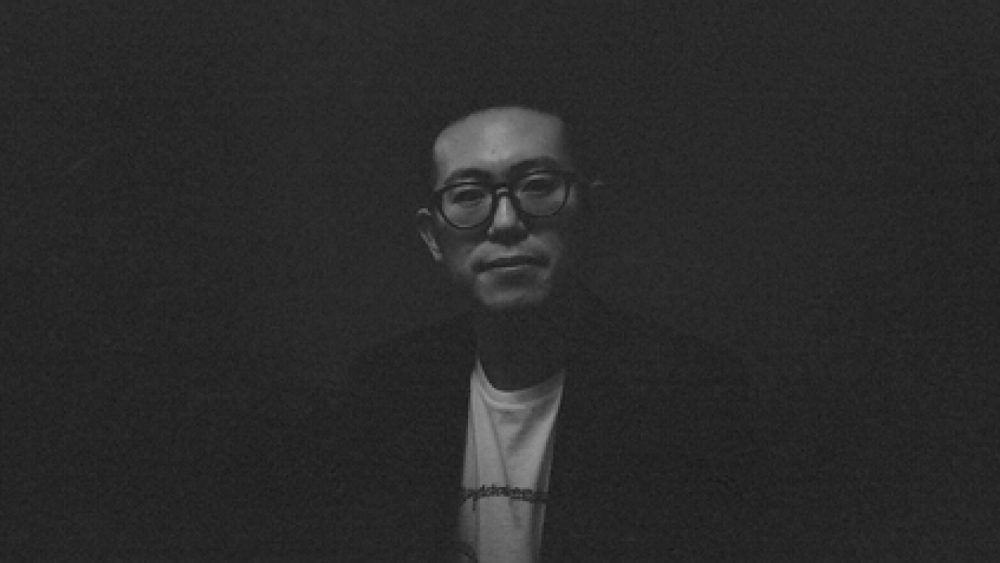Uģis Niedre
Latvian historian and ethnographer Uģis Niedre (1948) does not consider himself a photographer. Nonetheless, his photographs are noticed by the artworld, and he is proud of them. “I photograph out of fun and a sense of duty. But photographing out of a sense of duty can be fun as well”.
Niedre took up photography while still at school. His father, also an amateur photographer, bought Smena cameras for both of them. He photographed everything he saw around him: at first it was school friends, then his army comrades and subsequently different moments in his life. After the army he entered the university, and his interest in photography grew. Taking ideas from magazines he understood that he should be photographing real, visible moments in order to immortalise them, instead of cultivating “salon art”. As Uģis says, “photography is valuable because it stops the moment, which instantly becomes history and later tells of time.” After his time at the university he worked at the Technical College of Cultural Employees, and a few years later switched to the Ethnographic Museum. There the ability to photograph was just as important as the ability to convert the visual into words. Then Niedre joined Gunārs Birkmanis’ VEF photo-club. Birkmanis paid great attention to documentary photography, and encouraged photographing people, their environment, and Latvia as they were. Working in the museum and seeing photographs from a long time ago, Uģis understood that black and white photography was a unique, captivating filament. “Black and white, in its various tones and shades, adds a mystique to photography. The depicted can be read on many levels. People and places that are totally strange, become and remain recognizable.”
Before you started photographing, was there any photographer that inspired you?
No, there wasn’t. I was looking at Swiss, Czech and East German magazines. In these magazines one could, of course, see salon photography, but one could also see the real ones. The way Cartier-Bresson used to work – his kinds of photographs really fascinated me. Also the way Jānis Rieksts and Mārtiņš Sams photographed a traditional lifestyle in an environment that many generations called their own. And the reference value of such photographs only grows with time. For example, a photographed building isn’t there any more after only two years. Neither are the people. There are no more Midsummer celebrations, no more fishermen or woodcutters. Photographs preserve the notion of the parish, the town, Latvia the way it was when the photographer clicked the shutter and captured their essence. These photographs make one think and imagine what might have been… If you know and can evaluate what you want to photograph, what should be photographed for the present and for the future, then everything is fine. You just have to develop your technique. The composition, the subject – you either have it or you don’t. Sometimes one can’t learn it by studying. But then again, these kinds of people don’t tend to be photographers.
What, as a photographer, gives you satisfaction most?
Back in the day, when you felt the shutter-click of a Zenit or a Practica, you could feel it right away… you know, often you press the shutter, and you feel that it’s a miss, but there are moments when you feel: yes, this is the right one. The photo is made! This brings satisfaction. Of course, you also get satisfaction when you develop the film and see that this and that came out well. Back then it took hours upon hours until from a single film frame one got a print that both technically and conceptually corresponded to what one had in mind. I’m not the perfectionist a photographer should be. To me it always seemed that the content is the main thing, one just has to present it right. I also gained satisfaction from a photo being chosen for an exhibition, or being printed in a newspaper or a magazine. If a photograph looks good to me, if it tells me something, then everything is fine.
Do you still photograph?
Nowadays I just photograph for pleasure. Landscapes, mostly. Almost all digital. I like to take a walk around Riga with a camera and photograph what I see, and how I see it at that moment.
What is the main thing that you wanted to show in the photographs of Vecsmiltene, which is in Russia?
In one way, Vecsmiltene was chosen by coincidence, but actually Dainis Stalts recommended that place to us. I wanted the photographs to capture the Latvians of Vecsmiltene and their environment. To show how these people still live, how they and their children still know Latvian. Back then (in 1982) it was still quite relevant because it wasn’t talked about very much.
When you photographed, did you for a moment live the life of those people?
I photographed mostly the people, whose biography and fate were written in their faces. Most of them were people who came back from being deported; have lived through all that, have lived through their property being taken away, were placed on 0.5 hectares of land, and forced to work for a kolkhoz. They used to be masters of their fathers’ fathers’ houses, of 50 hectares of land; they were Latvian patriots. I definitely felt sympathy for their tough lives. Maybe I just exchanged a couple of words with a person, pressed the shutter. But somehow I felt them. I don’t know, somehow I felt I needed to photograph them.
You have said that the picture is the photographer’s and the viewer’s mirror, as well as the door “through the looking glass”. How should we understand this?
It is the door both to the moment of past of the photograph, as well as to the future of that which is photographed. When, through one’s life experience, one has lived through all of this, this door to the world behind the looking glass opens up. That is, what you know what will happen to the people or the places in the photograph, what is happening to you or to the ones you know at the time, when the photograph happened. The door leads to the time-space expansion.
Material was prepared in collaboration with the Latvian Museum of Photography
